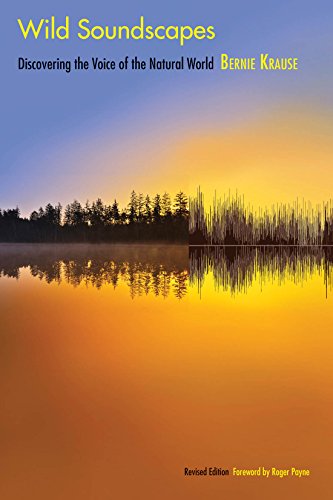
Photo taken from Eshaness Lighthouse – situated on the Northmavine peninsula in the north-west of the Shetland Islands, Scotland. Recording the geophony of the area – the waves and wind was a challenge, but quite exhilarating!
Bernie Krause’s revised edition of “Wild Soundscapes: Discovering the Voice of the Natural World” is a comprehensive guide to the world of soundscapes and the role they play in the natural world. Krause’s work highlights the importance of soundscapes in understanding the health and well-being of ecosystems, as well as the challenges posed by anthropogenic noise.
Krause identifies three primary acoustic sources that make up the soundscape: geophony, biophony, and anthropophony. Geophony refers to the natural sounds of the earth, such as wind, water, and geological activity. Biophony is the collective voices of the natural world, including the sounds of animals, insects, and plants. Anthropophony is human-generated sounds, such as traffic, construction, and industrial noise.

Biophony, in particular, is essential in understanding the health of ecosystems. The variety and complexity of biophony reflect the diversity of species and habitats within an ecosystem. Krause argues that monitoring and analysing changes in biophony can provide valuable insights into the state of the environment, including indicators of environmental stress, habitat degradation, and changes in biodiversity.
Unfortunately, biophonies are increasingly threatened by anthropogenic noise. Human-generated sounds, such as transportation noise, construction, and industrial activity, can drown out the sounds of nature, making it difficult for animals to communicate, mate, and forage. Krause notes that anthropogenic noise pollution can have significant negative impacts on the health and well-being of both humans and wildlife, including stress, hearing damage, and changes in behavior.
One of the most significant challenges in preserving biophonies is the growing prevalence of anthropophony. As human activity continues to expand and urbanisation increases, the natural world is increasingly subjected to human-generated noise pollution. Even protected natural areas are not immune to the impacts of anthropogenic noise. For example, a study by researchers from Colorado State University found that noise from human activities had a significant impact on the breeding behavior of migratory birds in protected natural areas.
Despite the challenges posed by anthropogenic noise, there is hope for preserving biophonies. Krause suggests that effective management of noise pollution requires a multi-pronged approach, including urban planning, engineering solutions, and individual behaviour change. He also advocates for the use of soundscape ecology as a tool for monitoring and assessing the health of ecosystems, providing valuable data for conservation and management efforts.
In addition to the practical applications of soundscape ecology, Krause’s work highlights the aesthetic and emotional value of soundscapes. Soundscapes can provide a profound sense of connection to the natural world, inspiring awe and wonder, and fostering a deeper appreciation of the beauty and complexity of the environment.
Bernie Krause’s “Wild Soundscapes” offers a detailed exploration of the importance of soundscapes, particularly biophonies, in understanding the health and well-being of ecosystems. The book highlights the challenges posed by anthropogenic noise and the need for multi-pronged approaches to mitigate noise pollution. Krause’s work also emphasises the aesthetic and emotional value of soundscapes, underscoring the importance of preserving these complex and diverse acoustic environments for future generations.
Note: If you make a purchase from the links above – I may make a small affiliate fee. This all helps to fund the website.
